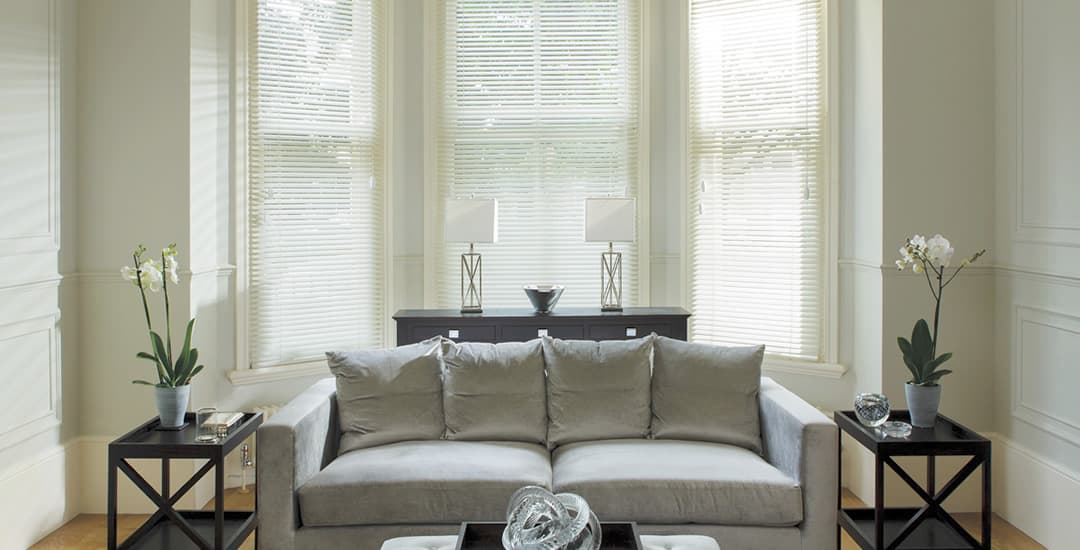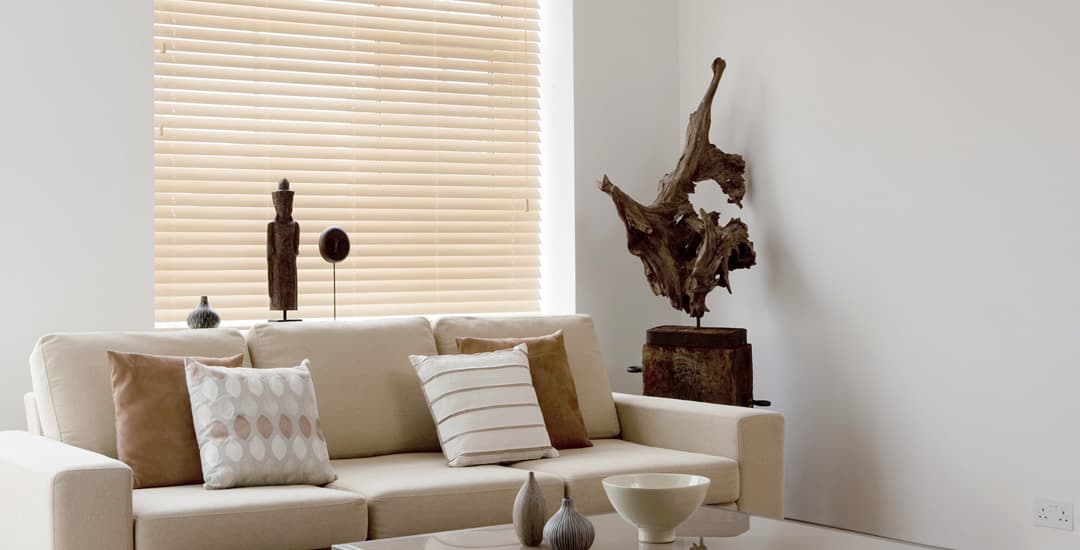
Are faux-wood blinds cheaper than real wood blinds? Yes, in the vast majority of cases, although this will depend to an extent on your ability to compare like-for-like on things such as the size of the window and the quality of the blind.
If you’re not comparing like-for-like but rather, playing with a lot of variables, a real wood blind might work out cheaper; for instance, if you compared a cheap, mass-produced readymade wooden blind with a good quality made-to-measure faux-wood blind for the same window.
However, it’s worth bearing in mind that purchase price alone can be a bit of a false signal where blinds are concerned, when it comes to determining which of any two given options is “cheaper.”
The less pricy option might be “cheaper on the day” but more expensive overall, such as if you have to replace it every year because it’s flimsy, or if you need to cut it to size and don’t like the somewhat unfinished or less-than-perfect appearance that this results in.
This is before you even take into account the cost of buying tools (like a saw or blades) you may not already have in order to cut down a readymade blind, plus the time it will take you and the odds of messing it up!
Overall though, when comparing as close to like for like as you can in terms of things like size, quality and so on, faux woods blinds cost less than real wood blinds.
By how much, and how much should faux wood blinds cost? I’ll cover these answers next. Read on to find out more.
Why are faux wood blinds cheaper than real wood blinds?
Ultimately this comes down to the cost of the two very different materials that make up the construction of the blind’s slats. For real wood blinds this is… Real wood! Basswood, to be precise, in most cases.
While some cheap imported readymade wooden blind retailers keep costs low by using other (less suitable) types of wood that are rarely ethically sourced and that in some cases are absolutely terrible for the environment, the wood of our real wooden blinds is ethically grown, sustainably forested, and harvested and transported in a carbon neutral manner.
Our wooden blinds do not cause or contribute to deforestation or habitat destruction, and ultimately we think that paying a littlemore for this isn’t just worthwhile, but in fact the only sustainable, justifiable, and ethical choice… And that paying less if this means negating any of these credentials would be irresponsible and Not Cool, on the part of us as the raw materials buyer, blinds manufacturer and retailer.
All told, this means that sustainable blinds made of natural wood tend to be more costly than blinds made of other materials, including their faux-wood cousins.
Faux wood blinds are made of PVC, a type of plastic, which is cheaper to produce. It does not have the same eco-credentials as wooden blinds though; albeit it is important to note that faux-wood blinds are fully recyclable (contact us if you’re having issues trying to recycle faux-wood blinds and we’ll point you in the right direction) and do not have to end up in landfill.
Do faux wood blinds look or behave differently to real wood blinds?

Other than due to the materials involved, are faux wood blinds cheaper than real wood blinds because they’re less visually attractive, or don’t work as well?
Noooo. Well, in terms of the appearance side of things, to give a comprehensive answer: good quality faux-wood blinds should not look cheap or plasticky. They should look solid, well made, and distinguish themselves as a premium product, assuming that they are!
That said, you can generally tell a PVC faux-wood blind from a real wood one if you look closely, largely due to the uniformity of the slats and in natural finished slats rather than painted ones, the consistency of the grain, which lacks the natural irregularities of real wood.
Functionally, faux-wood blinds and real wood blinds are both a type of Venetian blind, and they work in exactly the same way and offer the same benefits in terms of thermal insulation, and control over both light filtering and privacy.
There are actually some applications for which faux-wood blinds would be by far the most suitable choice, or in which real wood blinds would not thrive; specifically, use in humid environments or over windows that condensate a lot, such as small or low-ceilinged kitchens or bathrooms without great ventilation.
Real wood will warp and split over time if exposed to a high degree of humidity or moisture in the air.
Conversely, faux-wood blinds don’t cope well with exposure to high temperatures regularly or for long periods of time; but we’re talking really high temperatures here, not “British summertime;” specifically, as in, temperatures in the region of 55 degrees Celsius or above. This is never going to be a problem for 99% of applications; the 1% being potentially a blind directly next to an open fire or solid fuel stove, above a radiator or in close proximity to another source of high heat.
Should I choose real wood or faux wood blinds, and which are better for the money?
If you want to get into the finer detail of the pros and cons of real wood blinds versus faux wood on the basis of factors including but not limited to price, our “are real wood blinds better than faux wood blinds” blog post has you covered.
If budget is your key consideration, faux wood blinds will be the most cost-effective option.
If you’re looking for blinds for a misty, humid, or damp room (or a window that condensates excessively) a faux wood blind might be your only suitable choice.
If you’re doing your whole home, you can always mix and match real and faux wood in different rooms, allowing you to pick the most suitable blinds for different applications, and use real wooden blinds in rooms like your lounge and bedroom where the visuals are most prominent and important, while keeping the costs lower where possible in other rooms too.
How much should faux wood blinds cost, and how does this compare to real wood blinds?
If you’re trying to get a benchmark for the relative pricing of a faux wood blind compared to a real wood blind, this can vary a lot based on whether you want a mass-produced readymade one from the lower end of the price and quality spectrum, or a good quality made-to-measure in each option.
How much should readymade faux wood blinds cost compared to readymade real wood blinds:
The averages for off-the-peg mass-produced readymade blinds:
| Type | Smallest size | Largest size | Average size (120cm x 120cm) |
| Faux Wood Blinds | £9 | £130 | £45 |
| Wooden Blinds | £6 | £140 | £57 |
The averages for good quality made-to-measure blinds:
| Type | Smallest size | Largest size | Average size (120cm x 120cm) |
| Faux Wood Blinds | £10 | £300 | £55 |
| Wooden Blinds | £12 | £350 | £78 |
As you can see, the difference in price may not be as supermassive for made-to-measure real wood blinds versus faux wood ones as you thought, and so this might not be the huge driving factor in your purchasing decision that it could at first appear to be.
Are faux wood blinds cheaper than real wood for my own actual specific window though, Pols?
You can run the numbers yourself to generate an instant price (and order right away if you like what you find too) on the individual product page for each of our different types of faux wood blinds and real wood blinds for sale, including factoring in all of the various customisation options we offer for colours, finishes, slat widths, and cords/ladder tape choices too!




